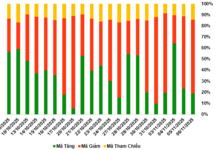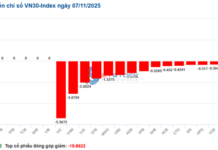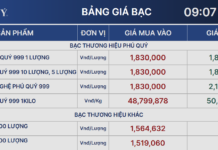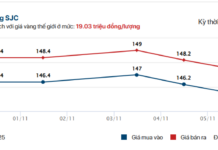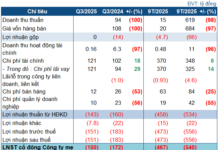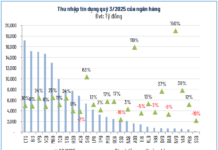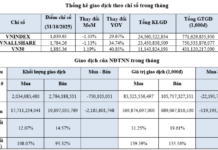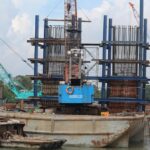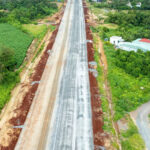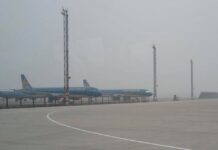The two expressway projects mentioned are the largest in the Mekong Delta region. The intersection point of these projects is located in Phung Hiep District, Hau Giang Province.
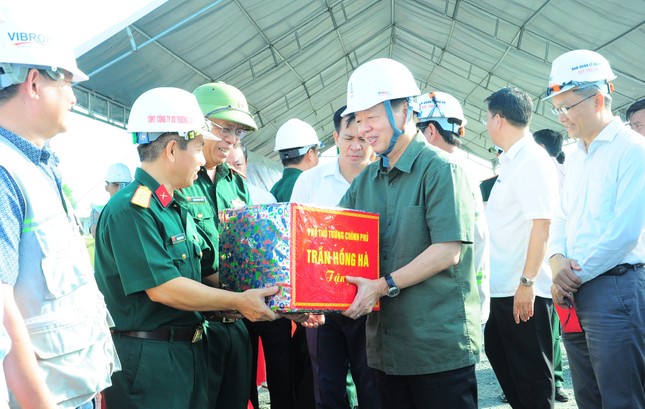
Deputy Prime Minister Tran Hong Ha inquiring about and giving gifts to officers, engineers, and workers of the project. Photo: CK
According to the report presented to the Deputy Prime Minister by the representatives of the My Thuan Project Management Authority – the investor of the Can Tho-Ca Mau Expressway project, the entire project’s land acquisition process is almost complete, except for a 200-meter section in Can Tho City, which is expected to be resolved by December this year. As of now, the construction progress has reached approximately 50% of the contract volume, with the goal of completing 117 bridges on the main route by the end of 2024 (41 bridges have already been completed).
Regarding the load-bearing work for the entire 110-kilometer main route and 2.8-kilometer connecting route, about 53% of the volume has been completed so far. It is expected that by December 31, 2024, the load-bearing work will be finished, creating the conditions necessary to complete the project in 2025.
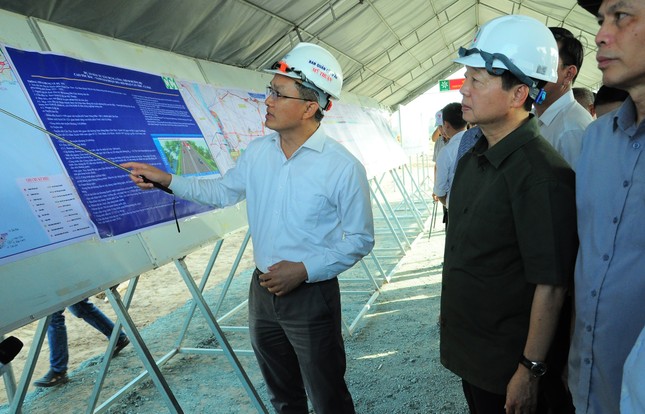
Representatives of the My Thuan Project Management Authority reporting on the progress of the Can Tho – Ca Mau Expressway project. Photo: CK
According to the investor, the most significant challenge for the project remains the availability of construction materials. Specifically, following the direction of the Prime Minister, Deputy Prime Minister, and the Ministry of Transport, the investor has coordinated with various provinces, including An Giang, Dong Thap, Vinh Long, Ben Tre, and Tien Giang, to secure the necessary materials under the project’s special regime.
Up to this point, the provinces of An Giang, Dong Thap, and Vinh Long have agreed to provide approximately 19 million cubic meters of river sand for the project, exceeding the project’s total requirement of 18.5 million cubic meters, along with 5 million cubic meters of marine sand from Soc Trang. While the total volume is sufficient, the extraction capacity is lacking, resulting in the current supply meeting only about 70% of the construction demand.
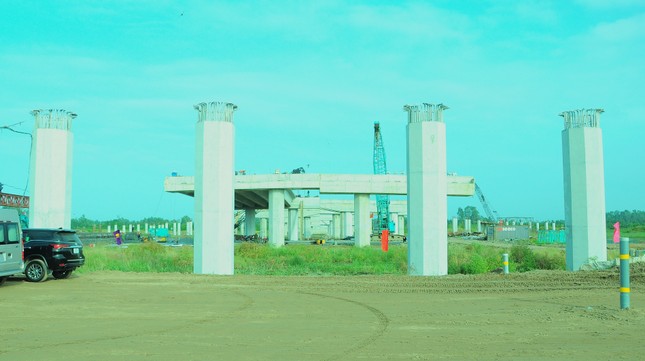
Construction of the overpass at the intersection of the two largest transversal and longitudinal expressway projects in the Mekong Delta. Photo: CK
In late October, the An Giang province halted operations in 7 out of 9 mines due to issues such as excessive extraction depth, risk of landslides, and poor sand quality caused by high silt content. Of these 7 mines, 2 have resolved the issues and are awaiting approval from the An Giang Provincial People’s Committee to resume operations, which is currently pending the opinion of the Provincial Party Committee.
Regarding the source of marine sand, the current season of northeasterly winds limits extraction to approximately 15 days per month…
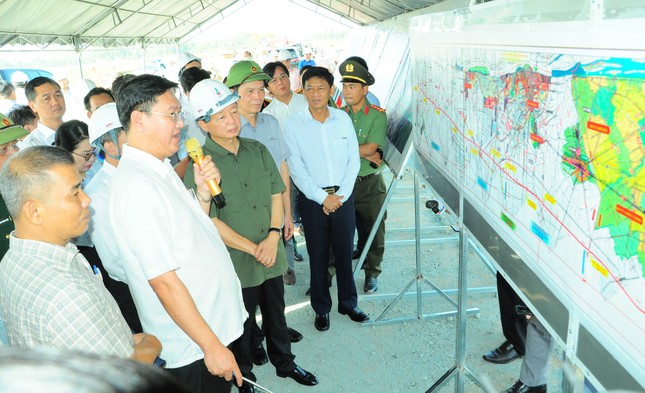
Investor of the Chau Doc – Can Tho – Soc Trang Expressway project component (the section in Hau Giang) reporting to the Deputy Prime Minister. Photo: CK
Concerning the Chau Doc – Can Tho – Soc Trang Expressway project, Mr. Mai Van Tan, Director of the Hau Giang Department of Transport (the investor of the project’s Hau Giang component), stated that this project is nearly 37 kilometers long and includes 3 interchanges and 24 bridges. Land clearance for the project has reached 100% completion. Due to the scarcity of sand, the province has directed its focus on bridge construction, with 5 bridges currently in the process of beam installation and the remaining bridges progressing at an accelerated pace.
In terms of construction materials, the project requires approximately 6 million cubic meters. Of this amount, 2.6 million cubic meters will be sourced from An Giang (of which about 500,000 cubic meters have already been shared with the Can Tho – Ca Mau Expressway project). The province of Ben Tre has committed to providing the remaining 3.4 million cubic meters, with an initial supply of 1.5 million cubic meters expected in early December. The current construction output of the project stands at 26%, with a projected year-end achievement of 34-37%.
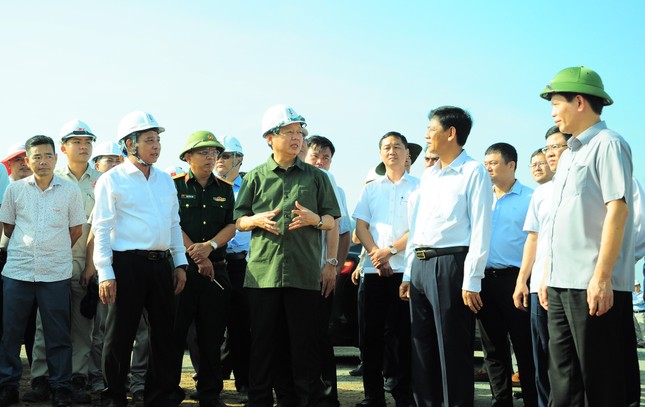
At the construction site, Deputy Prime Minister Tran Hong Ha requested that, by this afternoon (November 20), during the working session in Soc Trang, the investors, local authorities, and relevant agencies provide detailed reports on the difficulties and obstacles encountered, as well as propose solutions to accelerate the progress of the projects.
The Deputy Prime Minister also emphasized that the construction of expressways in the Mekong Delta region must consider the unique characteristics of this riverine area, ensuring that the flow and supply of water are not obstructed and that the livelihoods and daily activities of the local population are not adversely affected…
“Proposal for $80 Million Support to Construct a Connector Road Between Dai Ngai Bridge and National Highway 60”
Recent developments in Soc Trang province have prompted a proposal to the Prime Minister regarding the construction of a vital road link. The proposal, sent by the Soc Trang provincial authorities, outlines the importance of building a road segment connecting the Dai Ngai Bridge to National Highway 60, within the province’s boundaries.
Why Do Lending Institutions Hesitate to Finance Agriculture?
The Mekong Delta region is highly vulnerable to the impacts of climate change, including rising sea levels, saltwater intrusion, and flooding. As per Mr. Tran Viet Truong, Chairman of the Can Tho People’s Committee, these risks make lending institutions hesitant to provide loans as the agricultural sector in this region is heavily dependent on weather and nature.
What Did Cao Bang Province and Deo Ca Group Propose to the Prime Minister Regarding the 121km Expressway Project, Invested with 23,000 Billion VND?
During his recent business trip, the Prime Minister urged the completion of two critical highway projects, Dong Dang – Tra Linh and Huu Nghi – Chi Lang, by the end of 2025.


